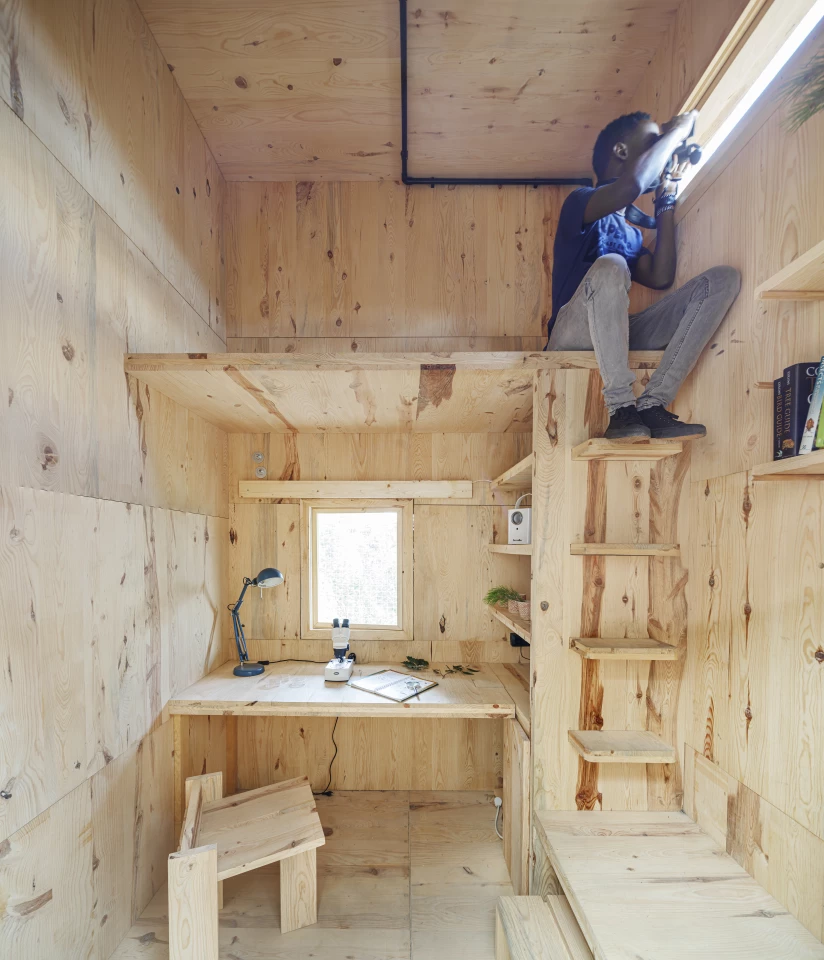Inspired by the work of groundbreaking American biologist Margaret D. Lowman, students at Spain's Institute for Advanced Architecture of Catalonia (IAAC) have built a research center to allow scientists to monitor bird and insect life, as well as the effects of climate change, in a Barcelona forest. Consisting of a simple shelter, it was constructed from sustainably sourced timber and takes its place remarkably well among the trees.
FLORA (the Forest Lab for Observational Research and Analysis) is situated on a hillside in Barcelona's Valldaura forest and reaches a height of around 8.5 m (almost 28 ft) above the forest floor. It's accessed by bridge and a handwoven net encloses it. Over time, the net will eventually be covered in foliage to provide camouflage. Its exterior also features multiple viewing points for observing the surrounding forest, as well as a rooftop with a terraced area and an integrated solar panel, which provides all power.
The interior is very small and simple, containing one multipurpose room. This includes a radio, an office space with a desk, chair and window, and some steps which lead up to a bird watching area. There's also a power outlet for charging laptops, phones and other small devices. Though very basic – there is no toilet installed for example – it allows a scientist to spend short periods of time there in relative comfort, studying the local biodiversity and carrying out research.

FLORA was constructed using 70 pine trees chosen following a sustainable forest management plan. The trees were first felled and then painstakingly processed by the students using a sawmill and a press to create cross-laminated timber (CLT) panels and glued laminated timer (glulam) beams. The structure was then clad in cork panels for insulation.
"This observatory is inspired by the excellent work of American biologist Margaret D. Lowman, a.k.a. Canopy Meg, considered the pioneer of the science of canopy ecology," explained IAAC's press release. "She is known as the 'mother of canopy research' and has spent the last 30 years designing hot air balloons and canopy walkways to explore the canopy in order to solve the mysteries of the world's forests, especially insect pests and ecosystem health.
"The conservation of the forest canopy is fundamental to guarantee the water cycle, as much of the water absorbed by the trees is recirculated to the atmosphere through transpiration, and its study is very useful for climate change mitigation research, as it provides information to analyze the absorption, storage and flow of carbon."
Source: IAAC











